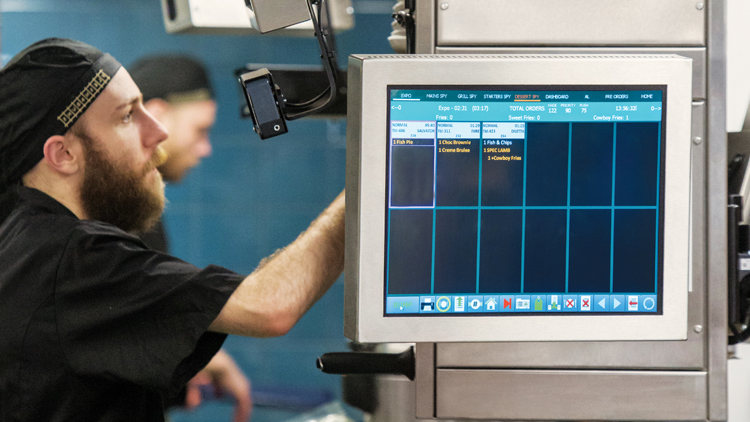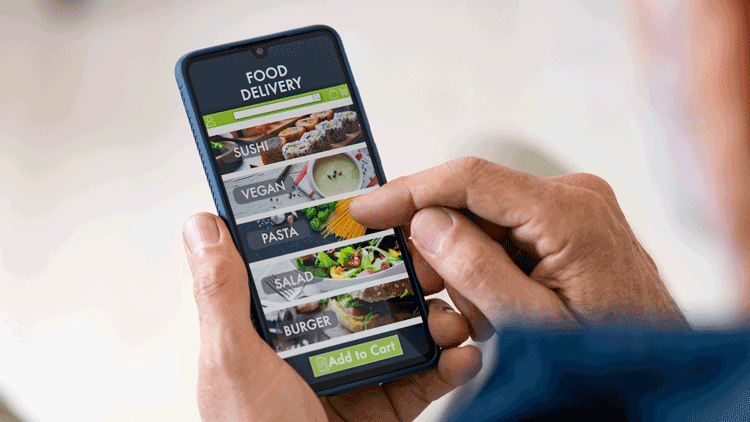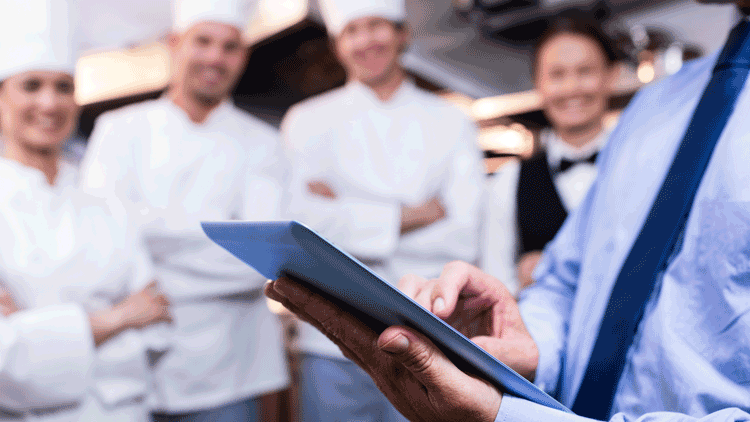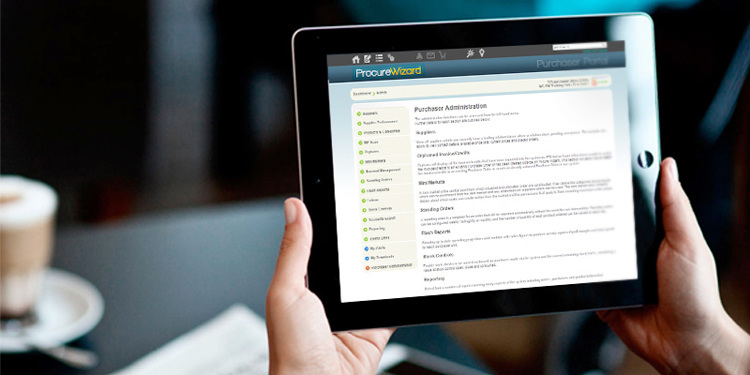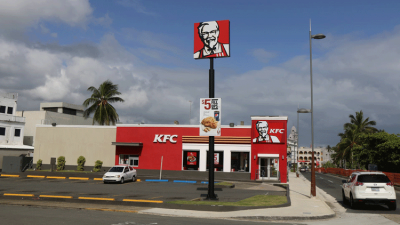Tech Hub
Why back of house should be front of mind
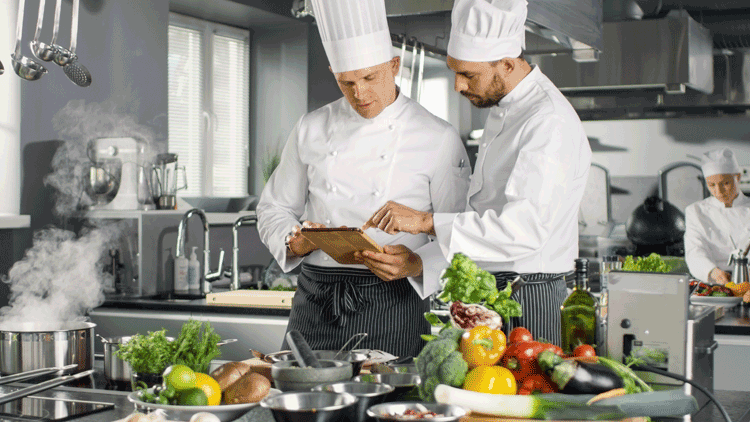
From platforms that allow restaurants to switch to retail and kitchen systems that helps speed up service and reduce errors to those that can help businesses make the most of their delivery offer, back of house technology is helping the hospitality sector cope in these challenging times. Here’s how it can help across different aspects of a restaurant business.
Kitchen management systems
Back of house kitchen systems have been appearing in more restaurant groups over the past few years thanks to their ability to streamline operations by increasing speed of service, accuracy and efficiency across all orders. However, with new time constraints being put on kitchens because of the 10pm curfew, and the need to turn tables faster to try and make the most of trading hours, automated kitchen management systems have never been so important for businesses.
Zonal’s kitchen management system Kitchen iQ is one such system that speed up orders with the use of screens placed in kitchens that show chef dishes they should be working on and the time required to cook and plate each dish so that entire table orders are prepared at speed and at the same time.
Businesses can monitor the time it takes for orders to be prepared and how long certain dishes take to make, at individual restaurants and across the estate. This can provide them with vital information in terms of dishes that should be dropped during very busy periods because they are too time consuming or contain too many elements.
With Tevalis’ Kitchen Management System (KMS) system kitchen teams are also able to streamline the way they work, by increase speed of service, accuracy and efficiency across all orders. Every order submitted by service staff, or through delivery platforms, is automatically sent through to the kitchen management screens with alerts ensuring that tickets are not lost.
The system offers increased transparency across all orders with all changes that are submitted by servers sent to the KMS, reducing the need for tickets to be passed back and forth between employees. Dishes on the system also include a more information button, which includes recipe and preparation cards, which Tevalis says is perfect for new starters.
In addition, operators can use such systems to monitor key performance indicators across the kitchen team, looking at aspects such as the time it takes for specific items to cook and whether dishes are being sent out too late by certain individuals.
E-commerce
“This year has seen a significant acceleration of the digital transformation across the hospitality industry, with many operators turning to technology to help them safely operate throughout the ongoing pandemic,” says Adrian Maseda, CEO and founder of Cheerfy, a platform that helps restaurants trade via different channels in a Covid world.
“Consumers of all ages and backgrounds have become accustomed to using digital order and pay platforms and the solutions have fast become an accepted element of the eating and drinking out experience.
“With the Government introducing a dynamic three-tiered system that outlines rules and restrictions on how and when hospitality businesses can operate, operators should consider introducing a mobile order and pay platform that not only provides a digital solution within venue, but also generates an e-commerce platform that can drive sales if the venue is forced to close, as well providing a delivery and click and collect function that hands complete autonomy of the data and guest experience back to operators.”
Cheerfy Shop is a solution that was created during lockdown, specifically to support restaurants in driving sales while they were shut as well as helping them to find ways to generate revenue from the engaged customers. Its purpose is to turn a business’ existing website into an e-commerce platform allowing it to sell products directly to customers, whether it be a restaurant dish delivery service, meal kits for people to make at home or grocery items such as ingredients, food and drink.
The platform has been created to give businesses flexibility to offer a range of different menus from their sites, providing a click and collect service for customers for same day or future ordering, as well as an order and pay solution for in-venue customers via bespoke QR codes. The company charges 1% commission per order, which is billed monthly.
“Crucially, it also allows operators to provide a delivery function through their existing website, giving them end-to-end ownership of the delivery process and autonomy of all of the data that is collected,” says Maseda. “This allows them to move away from third-party providers and the associated costs.
“While the outlook for the hospitality over the next six months is uncertain, what’s clear is that operators will need to be dynamic in how they drive sales. Lockdown proved just how resourceful and creative the industry is, and the ability to pivot, commoditise their brand equity, and sell products remotely via an e-commerce platform will be a vital tool in operators’ arsenal as they look to drive revenue and negotiate the challenging months ahead.”
EPoS provider Tevalis also suggests restaurant businesses look at E-commerce. The company has put together a Life After Lockdown guide for operators, in which in suggests add on such as E-commerce and gift vouchers can provide restaurants with vital extra income in these challenging times.
“While many of us have been isolating at home and many activities have stopped, online shopping has not. Many F&B operators have noticed this and have added an E-commerce element to their business to retain revenue,” it says.
“This is not something which will work for every F&B business, those with the right products/offering will find it to be an effective avenue to consider for the long-haul rather than a temporary fix. This has proven to work particularly well for venues with speciality products such as coffee, which can easily be packaged, preserved and delivered.”
The company describes gift vouchers as a “tried and tested way that customers like to support the hospitality industry” and says they are effective in enabling loyal customers to introduce your business to others.
Delivery and dark kitchen tech
With restaurants forced to close during lockdown, the ability to offer delivery became a lifeline for many looking to get some money through the tills and keep their supply chains going.
“Restaurants saw online delivery and online ordering as a nice-to-have feature but due to Covid restaurant owners realised that being online is the way to survive during times that customers can’t dine-in,” says Jerome Laredo, chief revenue officer at online order management platform Deliverect.
“We’ve seen restaurants changing their approach, being inventive in terms of engaging customers through online channels by being online on multiple platforms, organising special offers, give-aways. The delivery sector has become crucial for the survival of the hospitality industry.”
In order to make the most of the delivery space, restaurants should use a platform that allows them to manage multiple delivery aggregators, such as Just Eat and Deliveroo, as effectively as possible. Deliverect has a menu builder that enables the operational team to easily build a menu and push it live on multiple delivery platforms and for multiple locations.
The centralisation of all this data enables restaurants and other food businesses to get consolidated reporting of all their channels, it says, with a dashboard providing them with a complete overview of their sales and what dishes, channels and time of the days work best.
“What’s key is having all your delivery and online ordering channels integrated in your ePOS, so you can manage online menus from one interface,” says Lardo, who believes online food ordering tech will become even more crucial for restaurants to survive in the hospitality industry in the future.
“We see restaurants developing their own delivery channels through direct to consumer approaches. In response and to support restaurants implementing their own online store, marketplaces like Uber Drive and Stuart are providing solutions for last mile delivery and the ability to dispatch.”
Restaurant tech company QSR Automations also points to delivery and off-premise as being key developments in the sector. “While most of these developments were pre-Covid, we’ve seen an acceleration and a dramatic shift to focus on off-premise and technology features that accomplish contactless interactions,” says Brian Wayne, vice president of customer success at QSR.
“Dark Kitchens have also become the latest development in back of house technology, as operators look to continue to offer their food without a storefront operation.”
At the onset of the pandemic, QSR released an off-premise order aggregator called ConnectSmart Go. The two major operational challenges that Go addresses are the ability to communicate with guests via SMS and the ability to communicate with the kitchen, via QSR’s ConnectSmart Kitchen alerting system, to let the back of house staff know that the guest has arrived to pick-up their food.
“Since the release of ConnectSmart Go, we’ve been focusing on guest initiated check-in or arrival features,” says Wayne. “For example, when a guest orders food for curbside pickup, they can receive an SMS with a link, that allows them to check themselves in once they arrive to pick up the order. Then, this can communicate the arrival update to ConnectSmart Kitchen running in the back of house, so the staff knows they can bring the order out to the guest.
As the pandemic subsides, Wayne predicts that off-premise sales will continue to be an important part of a restaurant’s business. “We’ll continue to see off-premise dining drive back of house tech innovation. Everything from improving the execution and accuracy of to-go orders, to efficiently delivering the food to the guests and as contactless as possible.”
Zonal says it has been developing further integrations with its third-party partnerships as demand for food increases and has been working with more delivery providers.
“It’s imperative that these platforms are embedded with systems such as EPoS and kitchen management systems,” says Alison Vasey, group product director at Zonal.
“By ensuring a seamless integration with delivery or click and collect channels, orders are easily managed into the kitchen, identified for different preparation ensuring the kitchen is not under pressure to serve all the orders regardless of the order destination.”
Workforce Management
The current climate has led to widespread change across the hospitality industry and the adoption and implementation of technology has been one of the key drivers in this change, with businesses forced to implement digital solutions to adhere to the numerous restrictions the pandemic has brought with it.
As well as the widespread adoption of front-of-house technology, such an mobile order and pay apps, operators are also harnessing technology back-of-house to guide their decision making in aspects such as future and historical sales and scheduling.
“Workforce Management (WFM) software provides operators with an insight into both future and historical sales and scheduling,” says Billy Waters, solution director, Workforce Management at Fourth. “Using a digital solution to expose illogical manual practices prevents poor decision making, as it removes some of the inevitable oversight that occurs with manual forecasting and scheduling.
“WFM software can provide clear guidance on where and when to deploy team members, and most solutions have the configuration to allow adjustment based on real data feeds. Sales opportunities still exist and understanding where they might be can be more easily identified when using a tech solution.”
According to Waters, admin time has been increasing year-on-year for the past decades now, so any time that can be given back to a manager to enable them to focus on their team and guests can be very useful. “We would expect the implementation of a strong WFM solution to give time back to operators, enabling them to better utilise their teams where they’re most needed. Having all of this information on one platform means labour conversations at a local, multi-site and national level can easily happen.
“It’s more important than ever before to be providing staff with key information, and an easy to navigate digital solution is the best way of delivering this.”
The lockdown has also made communication between staff, many of whom were on furlough, very challenging at times, and many WFM solutions now have communication channels built in, making it easier for organisations to communicate directly with staff members, regardless of whether they’re a regional, multi-site or national operator, adds Waters.
“While usage has dropped off slightly since reopening, the ability to spread news and engage a workforce concisely and accurately is a powerful tool in an operator’s arsenal.”
Access’ cloud-based workforce management solution helps businesses to streamline their human resource and people management processes and can manage everything from employee recruitment and onboarding to holidays and tronc payments. It also provides workforce scheduling and rota management and labour optimisation tools to help ensure the right staff are on at the right time.
Access' David Whyte says there has been a dip in demand for labour management systems simply because of reduced staff numbers in the sector. However, once the pandemic is finally over he predicts that it will become a "massive focus" for restaurant groups.
"They will be looking for a system not only for HR and scheduling processes but around optimisation," he says. "Where businesses would historically get in teams from 10 til two and six til 10 - the classic split shift - people will be looking more for 10.45 til 2.15 because that’s the impact point on a Saturday. They will be focusing more on the 15 minute power gains as a group to see marginal returns in terms of the optimisation of teams."
Whyte says the lockdown brought about by the pandemic has also allowed businesses to take a closer look at their operations.
"Most businesses run at 120mph and they are always understaffed. During the shut down owners have started to look in microdetail about what their costs really are. Shutting down the service has allowed them to see what their true running costs really are. People are now starting to say 'do we need to stay open all day, and if so where do we need staff?'.
Access is looking at creating budget manager software that take all a business' costs centres and allocate a budget line against them. "It looks at all the costings across the Access products - you push it all through the budget tool, which then allows someone to import their P&L and it will produce a mini P&L in the back end to say this is how you are performing to date and this is your available spend.
"Hotels have been asking for this for some time, and now restaurants have clicked that they should start tracking their consumables and their direct expenses. This will become a critical tool once we get up and running."
Full system integration
From a back of house perspective more people are increasingly seeing the value of a fully integrated digital solution. Not only are operators looking for new solutions to support their businesses through the pandemic, but existing technology and infrastructure also has to be up to the job.
“When you consider the impact of VAT changes, Eat Out to Help Out implementation and reporting, adjusting table management to facilitate the ‘rule of six’ and social distancing, technology became key in accommodating these changes,” says Vasey.
“As a result, operators are looking for seamless connectivity, tightly integrated solutions that will allow them to manage and respond to these changes across multiple platforms and sales channels, quickly and efficiently.”
There has never been a greater need for a holistic view of customer touch points and this can only be achieved through an integrated approach to technology platforms. Back of house systems will need to be more connected to provide a greater level of control in supporting the tools consumers use to order, pay and request service.
“The operational tech that sits behind the scenes needs to enable the consumer to be autonomous in these actions, but still allow the staff to be aware of what is going on, be able to manage it and still provide that personal touch where needed,” says Vasey.
Tevalis commercial director James Humble also emphasises the importance of integration of systems. “This is where the Tevalis EcoSystem can enable operators to visual their 360 connected technology suite, ensuring that back of house tools such as finance, systems from Sun/Sage/Xero are full integrated, helping to reduce costs, whilst improving efficiency and speed of producing key financial account information which at current times are essential to ensure you trading at a profit,” he says.
“Partnerships, integrations and APIs (application programming interfaces) are king now, ensuring you have a connected suite of technology to complete your digital data journey is the future of hospitality technology.”
Tevalis says it has taken the key decision to focus all its development resource into stabilisation and reliability to ensure its products are ready for the next phase of growth in the UK and internationally.
Humble adds there is also more focus than ever on streamlined stock solutions, saying that sales of Tevalis’ stock module have increase 114% on the same period last year.
“Simply put it provides operators an overview of purchases, stock asset value, live profit and margin reporting as sales are executed, then in turn making action on live inventory movements, ready for stock counts, line checks and execution of a stock period. All providing transparency on the assets that are generating your revenues and profits. This combined with a new stock app enables all these above processes to be performed much quicker.”
Access Hospitality’s Access Workspace for Hospitality promises an end-to-end solution for hospitality operators where data flows across key business applications, with critical decision-making information available on the-go in one place, from one provider. This brings together Access’ EPoS, reservations, ticketing, procurement, purchase to pay, property maintenance, people management and finance solutions and is designed to support multi-site hospitality pub and bar, restaurant and food-to-go operators.
Access also offers its Access Procure Wizard procurement system, which features a database of all products purchased by a restaurant is maintained and updated by suppliers to give restaurant businesses a full picture of allergen details every time they create a new a menu, place an order or prepare and serve a dish.
Another focus for the company is providing affordable systems for independent restaurant. "They can often not afford any of the systems out there because the set up fee can be three months’ takings," according to Whyte, who says Access has created Hospitality Lite, plug and play system that he describes as a lighter version of Access' products. "It give independents a basic scheduling and booking system and a POS but with the Access quality."
Achieving full integration is also what companies are aiming for. "Everybody wants to integrate everything. We are focusing on our own products but also how to integrate with information coming in from third-party products," says Whyte. "Along with that people also want an app with everything, so rather than going on the website people want a single app to place an order, do their stock, update holidays."
Tevalis' Humble also believes that in the future there will be more app-based back of house technology. “With remote working becoming more and more the new norm it’s absolutely key to ensure your back of house technology runs on cloud services,” he says.
“Once again businesses are now reacting to old technology running old legacy platforms, which don’t provide the flexibility to adapt during these times of crisis.
“The hospitality industry needs to be ‘tech creative’ and ensure they adapt their internal systems to ready them for the new norm hospitality for 2021 and beyond.”
With Christmas approaching, Zonal says it has been developing platforms to provide deeper insights and greater operational control for pre-orders to support the festive period. The platforms, it says, will enable operators to have a greater understanding of the data available to help them make informed decisions on stock ordering, preparation and overall stock management.
The Insider: Henry Seddon, managing director, Access Hospitality
What are the latest developments in back of house tech?
Back of house technology is strongest where different modules integrate seamlessly to deliver maximum business benefit and this is one of the major developments we see coming through. With capacity restrictions, curfews and other restrictions imposed, having visibility of, and controlling costs, is essential for restaurants to survive but where it is now possible to integrate reservations and advance orders with stock purchasing technology, the potential for making incremental cost savings is amplified.
How has the pandemic changed what restaurants need from back of house systems?
It is not necessarily about changing needs, but about the areas that should always be running at maximum efficiency being highlighted by the pandemic. An automated purchase to pay system enables restaurateurs to streamline their supplier relationships by establishing an online ordering process, getting the best price for the best products and automating the credit process. For individual dish selection and pricing, technology breaks down the full sales mix and makes it simple to take a proactive approach to monitor peaks, identify trends and respond to variations.
What does the future hold for technology in the hospitality sector?
There are two main areas where further developments are likely. ‘Big data’ describes extremely large sets of data coming into a business daily and includes venue performance, spend per head and customer satisfaction. Consolidation and analysis to drive decision making can be time consuming and confusing but the introduction of a single platform to serve data from all hospitality technology will deliver significant benefits in accuracy, efficiency and cost savings. Another area will see technology help in the challenge of reducing waste which is a focus from a cost and sustainability perspective. Tracking food returned or thrown away will contribute to regulating portion control and minimising waste.
